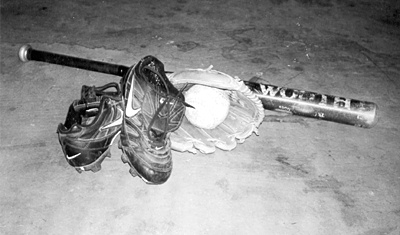All Nonfiction
- Bullying
- Books
- Academic
- Author Interviews
- Celebrity interviews
- College Articles
- College Essays
- Educator of the Year
- Heroes
- Interviews
- Memoir
- Personal Experience
- Sports
- Travel & Culture
All Opinions
- Bullying
- Current Events / Politics
- Discrimination
- Drugs / Alcohol / Smoking
- Entertainment / Celebrities
- Environment
- Love / Relationships
- Movies / Music / TV
- Pop Culture / Trends
- School / College
- Social Issues / Civics
- Spirituality / Religion
- Sports / Hobbies
All Hot Topics
- Bullying
- Community Service
- Environment
- Health
- Letters to the Editor
- Pride & Prejudice
- What Matters
- Back
Summer Guide
- Program Links
- Program Reviews
- Back
College Guide
- College Links
- College Reviews
- College Essays
- College Articles
- Back
Play Ball
Softball is one of America’s biggest team sports played by people of all ages. The game is popular with kids, with adults, and with teens. Over time, this four base game has become one of Americans favorite sports because of its history, its rules, and its popularity as a team sport.
On Thanksgiving Day of 1887, a group of Yale and Harvard alumni were waiting for the results of their former school’s football game at the Farragut Boat Club. After Yale defeated Harvard, an enthused Yale supporter threw a boxing glove at a Harvard alumnus. The Harvard man hit the boxing glove with a stick and the rest looked up in interest. This playful action brought an idea to George Hancock, the reporter for the Chicago Board of Trade. Hancock called out to his friends to “PLAY BALL!” He tied the strings of the boxing glove to make it into a ball shape. Then, with chalk, he drew the home plate and base markings inside of the Farragut Boat Club gym. Soon, this game of “indoor baseball” became popular all around the United States. (Invention Help, 2014)
There have been many changes in the rules and in the usual traditions of softball since 1887. For example, in 1887, the pitcher’s mound was placed thirty-five feet away from home plate and now the distance has increased to forty-three feet. (Invention Help) Also, the equipment that was used in 1887 is different than softball equipment in the present day. The Harvard and Yale alumni had used a sixteen inch ball, while softball is played with a twelve inch ball. (Athnet, 2001-2014) They also used a broom stick in place of a bat. Until 1926, softball was known as kitten ball or diamond ball.
Women’s softball was a popular sport in 1996, when softball was added to the Summer Olympics. The USA softball team, over time was equal with the most successful Olympic team sports, bringing in a total of twenty-six gold medals. These medals included the World Championship, Pan American, and the World Cup of Softball medals. (Team USA, 2014) The USA women’s softball team won their first Olympic Gold Medal in 1996 with a record of 8-1, followed by two more succeeding years of receiving gold. In 2004, the women’s USA team was known as “The Real Dream Team” after its 9-0 season and eight continuous shutouts. The coach of “The Real Dream Team” was Mike Candrea, the head coach of the University of Arizona. The USA team had won seven consecutive World Championships until losing to Japan in 2012. Before the 2012 Summer Olympics, women’s softball was released from the roster. Many Americans are taking action to bring back Women’s Softball in the 2016 Summer Olympics. As Mike Candrea said, "I think if there is any team ready for it, it's us. We played a very good schedule and we know what we need to do."
We face the challenges of work, family, and friends every day. But Americans are known for their love of sports. No sport has the enormity of popularity as softball. Millions of players and fans are involved every year, entertaining and amusing those of us with the love for the game.
Works Cited
"History of Softball." Athletic Scholarships. N.p., n.d. Web. 03 Apr. 2014.
"Invention Of Softball." Invention Help. N.p., n.d. Web. 03 Apr. 2014.
"USA Softball." Women. N.p., n.d. Web. 03 Apr. 2014.

Similar Articles
JOIN THE DISCUSSION
This article has 0 comments.
